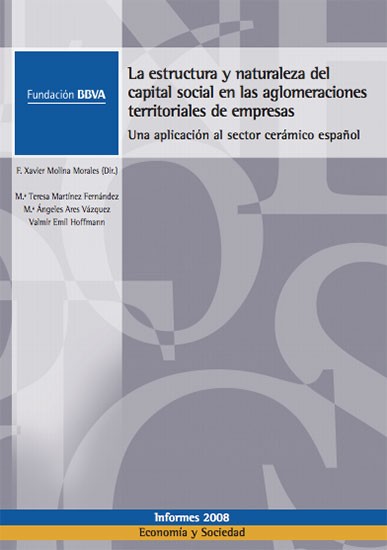
PublicationReports
La estructura y naturaleza del capital social en las aglomeraciones territoriales de empresas
Una aplicación al sector cerámico español
Recently and from diverse disciplines, there has been an increasing interest in the structure and nature of the interpersonal relationships in social systems. As a result, there has arisen a common theoretical framework, in order to understand this phenomenon. It is a theoretical framework based on the concept of social capital. On the other hand, geographic proximity affects frequency and intensity of the relations, conditioning if not determining a specific characterization of the social capital. In particular, territorial models such as the industrial district or industrial cluster analyze the impact of geographic proximity in organizations and institutions.
In spite of the important and increasing attention that have received both subjects (social networks and territory), there has not been developed a conceptual model that relates the two perspectives and that allow an evaluation of the threats and opportunities that represented.
In order to cover the lack in the previously mentioned research, our work attempt to make a detailed revision of the recent contributions in the perspective of social and territorial networks with the purpose of proposing a theoretical model of integration. We apply the model to the case of the ceramic tile industry of Castellón. The results confirm the initial expectations and support the idea that the structure and nature of the interorganizational ties can be associated with the capacity of innovation of the firms.
